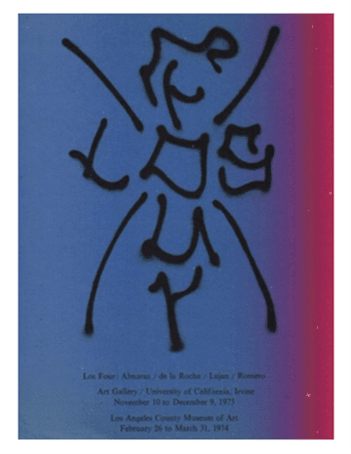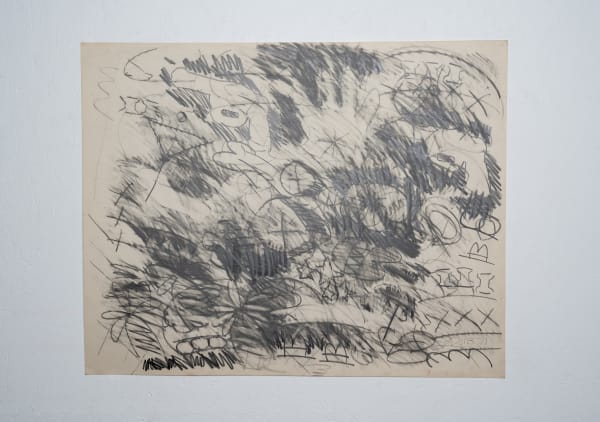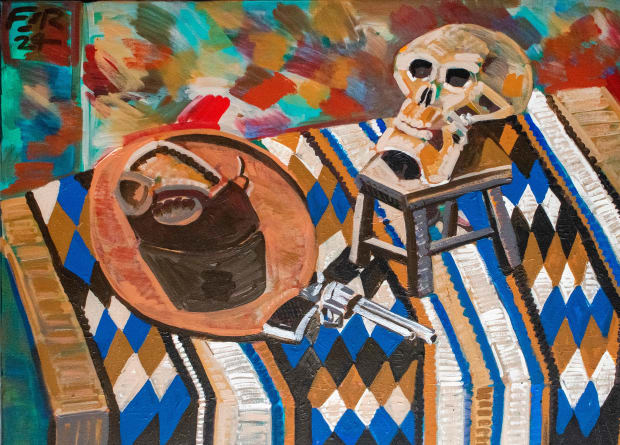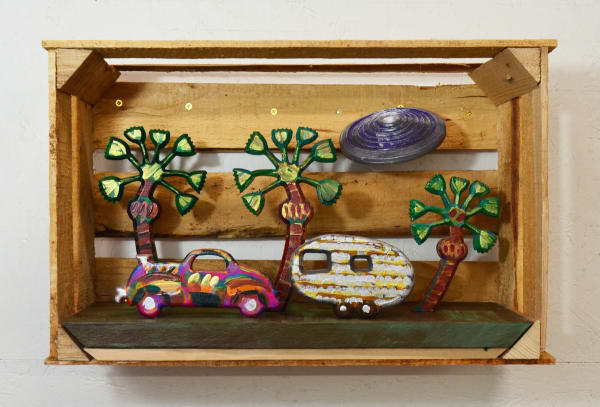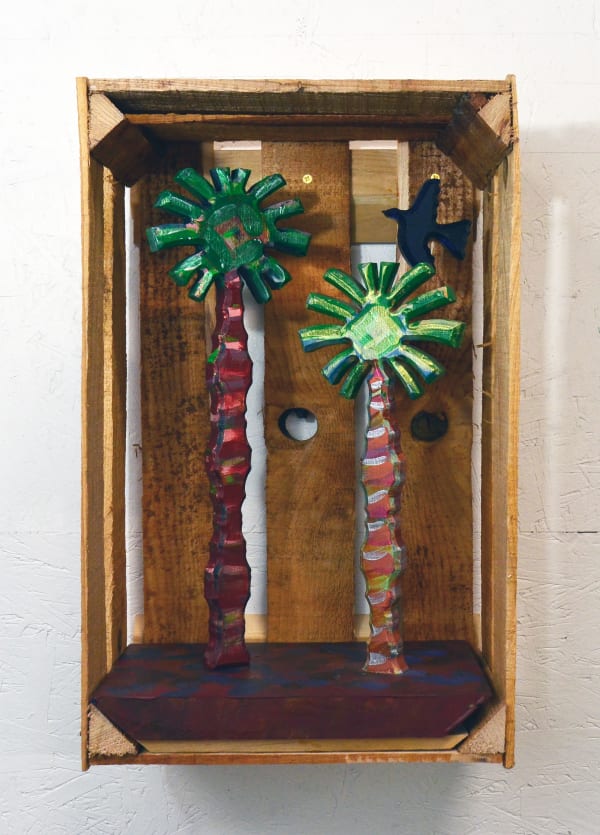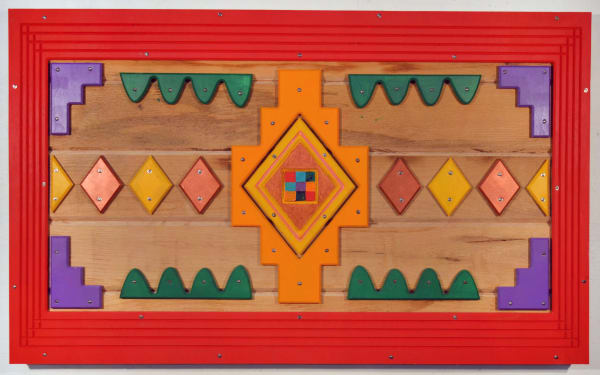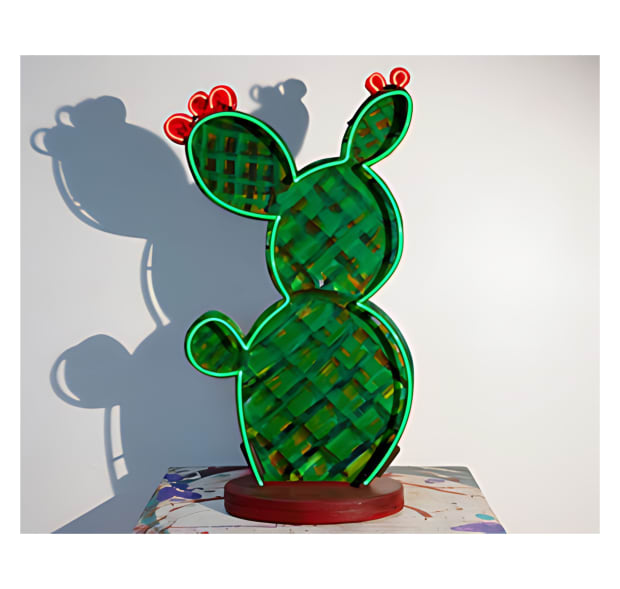-
De aquí y de allá: Frank Romero, A Survey
CURATED BY RAFAEL BARRIENTOS MARTÍNEZ -
Ruiz-Healy Art is pleased to present De Aquí y de Allá: Frank Romero, A Survey, a concurrent solo exhibition of works by Los Angeles-based artist Frank Romero, curated by Rafael Barrientos Martínez at our New York City and San Antonio galleries. De Aquí y de Allá: Frank Romero, A Survey will be on view at our New York City gallery from Thursday, November 14th, 2024, to January 31st, 2025. This collection of work unravels the cultural mosaic of Romero’s lived history as a pioneer of the Chicano/a movement, encompassing a variety of visual narratives influenced by his hometown of Los Angeles, California, and his travels across the greater American Southwest. This year marks the 50th anniversary of the influential Chicano art collective Los Four, of which Romero was an original member. The group helped redefine Mexican American artistic expression and bring attention to Chicano art in an institutional setting.
-
 Frank RomeroLos Four: Almaraz / de la Rocha / Lujan / Romero, 1974Offset lithograph
Frank RomeroLos Four: Almaraz / de la Rocha / Lujan / Romero, 1974Offset lithograph
Produced at the School of Fine Arts, University of California, Irvine
Artist's book designed by Frank Romero
1500 copies printed by Toyo Printing Los Angeles
Photographs are by Frank Romero and Hal Glicksman25 x 35 in
63.5 x 88.9 cmtotal edition of 1500. Printer's proof -
“Within the LACMA EXHIBITION, the artists presented collaborative spray-paint paintings, social realist works, ephemeral and large scale sculptures, and installations that referenced home altars or ofrendas filled with personal ephemera, folk art, and everyday items. Overall, this exhibition and its accompanying programming challenged considerations of how we define both Chicana/o art as well as fine art overall, a postcolonial intervention that exposed exclusionary legacies while leaving the door open for those to come." - Rafael Barrientos Martínez
-
The Black Drawings series brings together symbols and imagery of the neighborhoods in East L.A., which were rampant in cases of police brutality during Frank Romero's adolescence. The choice of graphite on paper allows the artist to render stark contrasts and instantaneously capture scenes that reflect Romero's commitment to addressing socio-political issues and the struggles of the Chicano movement in the 1960s and early 1970s. "Nostalgia for that era or a lot of the ideas is still very much a part of my work, which is stream-of-association, stream-of-consciousness. A lot of my work deals with that. And that's all happened because we all sat around the kitchen table and did drawings, and sort of every so often switched pieces of paper and worked on each other's drawings, in a collective spirit. I always enjoyed that, and to this day, where I sort of work more or less alone in my studio, I still do those kinds of works," explains Frank Romero.
-
 Frank RomeroUntitled (Homage to Lee Mullican), 1972Gouache on paper22.125 x 34.375 in
Frank RomeroUntitled (Homage to Lee Mullican), 1972Gouache on paper22.125 x 34.375 in
56.2 x 87.3 cm -
Part of a larger body of work, the Chicano Iconography series explores the cultural and political identity of the Chicano community. Romero’s characteristic bold colors and iconic motifs are present and reflect on his experiences growing up in East Los Angeles. Objects drawn from the aesthetics of muralism and pop art stand as symbolic imagery for broader themes like social justice, culture, and identity.
-
"In 1979, Frank Romero and his then-wife Nancy Romero bought land in Arroyo Seco, Taos, joining other California artists who spent part of the year there. They built an adobe house with help from the Taos Pueblo community, which sparked Romero’s deep interest in Southwestern culture. While building his home, he developed a unique process using earth and acrylic varnish instead of traditional clay plaster. This experience inspired his 1990s Adobe Series, where he displayed various soils in adobe molds as wall reliefs.”- Rafael Barrientos Martínez
-
 Frank RomeroPistola y Calavera, 2023-4Acrylic on canvas36 x 48 in
Frank RomeroPistola y Calavera, 2023-4Acrylic on canvas36 x 48 in
91.4 x 121.9 cm -

Frank Romero
Pingo and Knife, 1989Silkscreen monoprint (Self-Help Graphics)
27.5 x 35.375 in
69.8 x 89.9 cm -
 Frank RomeroCowboy, 2024Acrylic on paper24 x 18 in
Frank RomeroCowboy, 2024Acrylic on paper24 x 18 in
61 x 45.7 cm -
Caja de Sombra-Dos Palmas (shadow boxes) is an artistic format that blends sculpture and painting. The work features palm trees, a recurring symbol in Romero’s work, “palm trees are all I’ve ever known. I don’t know a Dutch elm from a maple,” reflecting on the natural landscape of Los Angeles, a central theme in much of his art. These shadow boxes often evoke personal and cultural narratives, capturing fleeting moments or memories. Caja de Sombra features a car towing a trailer against a backdrop of acrylic-painted palm trees. The wooden three-dimensional sculptures recall the artist’s long-standing interest in the image and symbolism of automobiles and lowrider vehicles. When Carolina Miranda from the LA Times (March 9, 2017) asked about the genesis of his intrigue in cars, Romero said, “It’s so much Los Angeles. My father loved to drive. I grew up in a car, driving everywhere. That’s what I know about California. Cars were a part of the culture. That’s all you talked about as a young man.”
-
Frank Romero’s work merges cultural tradition with contemporary materials, as seen in Nopal, where the iconic cactus symbolizes resilience in Mexican and Chicano identity. Using neon, acrylic, and wood, Romero bridges the past and present, reflecting his early fascination with neon signs and his Chicano roots. Similarly, Serape de Madera con Rojo draws on the geometric patterns of Southwest textiles, reimagining them with bold acrylic colors on wood.
-

De aquí y de allá: Frank Romero, A Survey: New York
Past viewing_room





